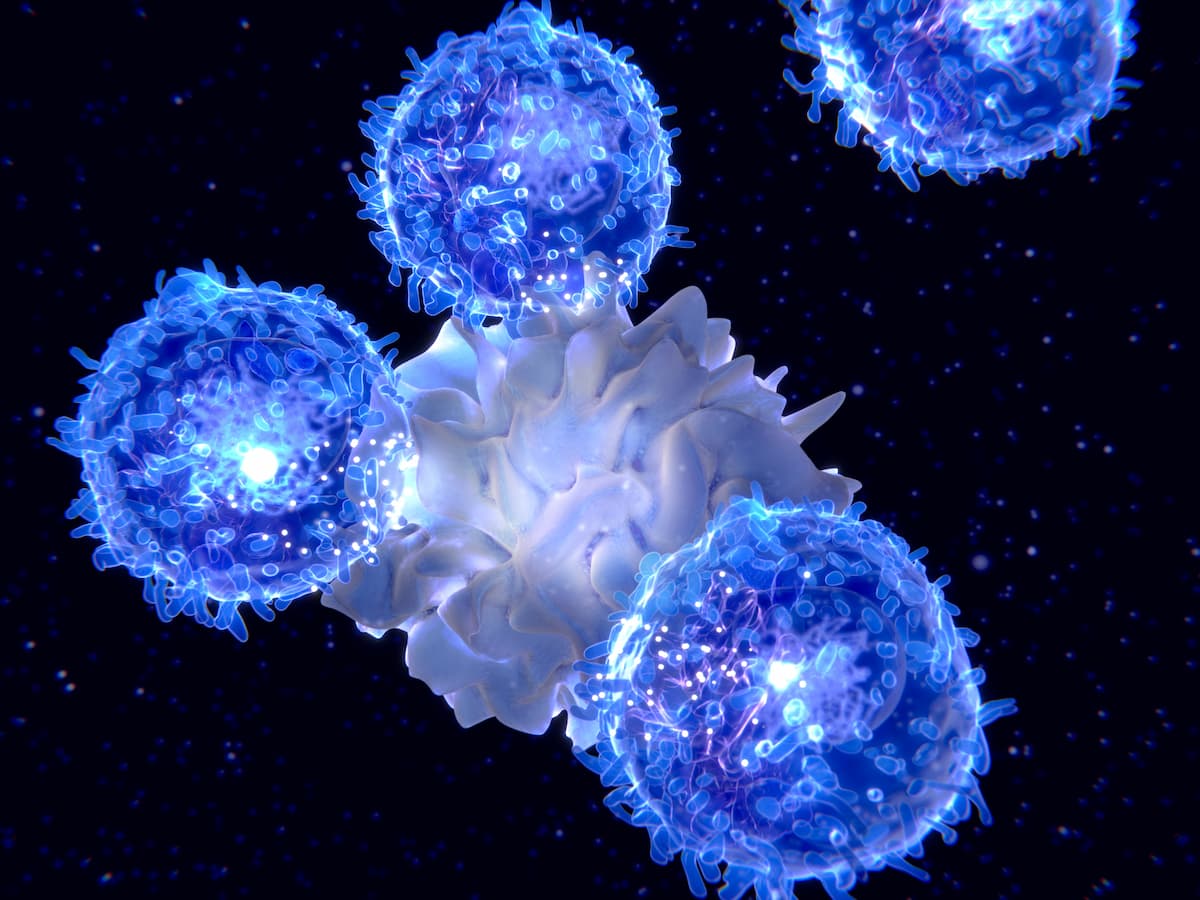Golidocitinib Shows Enduring Activity in Relapsed/Refractory PTCL
Findings from the phase 2 JACKPOT8 study support golidocitinib as a potential treatment option for those with relapsed or refractory peripheral T-cell lymphoma.
“Golidocitinib could be a potential treatment option with a favorable benefit/risk profile in treating relapsed or refractory [PTCL], and the results of this study are planned to support a new drug application and potential accelerated approval of golidocitinib in treating this serious disease," according to the study authors.

Treatment with golidocitinib elicited favorable benefits among patients with relapsed/refractory peripheral T-cell lymphoma (PTCL), according to findings from part B of the phase 2 JACKPOT8 study (NCT04105010) published in Lancet Oncology.
Golidocitinib produced an objective response rate (ORR) of 44.3% (95% CI, 33.7%-55.3%; P <.0001) and a complete response (CR) rate of 29.5% (95% CI, 20.3%-40.2%) based on independent review committee (IRC) assessment. Of those with a complete tumor response, 19% did not have a bone marrow biopsy following treatment, translating to a combined CR rate of 23.9% (95% CI, 15.4%-34.1%).
Treatment with the experimental agent led to responses regardless of factors including age, sex, ECOG performance status at baseline, bone marrow involvement, and prior treatment for lymphoma. Investigators also noted that responses were comparable among those with different pathological subtypes and in patients who received various prior lines of treatment.
“In this phase 2 study, golidocitinib showed remarkable and durable anti-tumor activity in patients with relapsed or refractory [PTCL],” the study authors wrote. “Golidocitinib could be a potential treatment option with a favorable benefit/risk profile in treating relapsed or refractory [PTCL], and the results of this study are planned to support a new drug application and potential accelerated approval of golidocitinib in treating this serious disease.”
In part B of the single-arm, international JACKPOT8 study, patients with relapsed/refractory PTCL received golidocitinib orally at 150 mg once a day until disease progression, unacceptable toxicity, or death.
The trial’s primary end point was ORR per IRC assessment based on CT scans using Lugano 2014 criteria. Secondary end points included ORR per investigator assessment, duration of response (DOR), CR rate, time to response, progression-free survival (PFS), and safety. Patients 18 years and older with pathologically diagnosed PTCL, an ECOG performance status of 0 to 2, and a life expectancy of 12 or more weeks were eligible to enroll on the trial.
The study included 104 patients who were treated with at least 1 dose of golidocitinib, and 88 comprised the activity analysis set. The median patient age was 58 years (IQR, 51-67), and most were male (65%). Additionally, most patients were Asian (94%), had an ECOG performance status of 1 or higher (55%), PTCL histology not otherwise specified (57%), no baseline bone marrow involvement (78%), no prior receipt of autologous hematopoietic stem cell transplant (99%), and 2 or more prior lines of therapy (73%). All patients (100%) were previously treated with chemotherapy.
Patients had a median time to first response of 1.4 months (95% CI, 1.4-1.5) per IRC and investigator assessment as well as a median DOR of 20.7 months (95% CI, 17.6-not estimable [NE]) and 18.7 months (95% CI, 4.1-NE) based on IRC and investigator evaluation, respectively. Additionally, the median PFS was 5.6 months (95% CI, 3.4-19.1) per IRC assessment and 3.4 months (95% CI, 1.7-5.6) based on investigator evaluation.
Investigators highlighted treatment-related serious adverse effects (SAEs) in 24% of patients, the most common of which included herpes zoster (3%), pneumonia (3%), and decreased platelet counts (3%). Additionally, 38% of patients required dose interruptions, 8% needed dose reductions, and 9% discontinued study treatment following treatment-related treatment-emergent AEs (TEAEs).
Grade 3/4 treatment-related SAEs mostly included neutrophil count decreases (29%), white blood cell count decreases (26%), lymphocyte count decreases (21%), and platelet count decreases (20%). According to the investigators, treatment-related TEAEs were generally manageable and reversible.
Reference
Song Y, Malpica L, Cai Q, et al. Golidocitinib, a selective JAK1 tyrosine-kinase inhibitor, in patients with refractory or relapsed peripheral T-cell lymphoma (JACKPOT8 Part B): a single-arm, multinational, phase 2 study. Lancet Oncol. 2024;25(1):117-125. doi:10.1016/S1470-2045(23)00589-2
Newsletter
Stay up to date on recent advances in the multidisciplinary approach to cancer.
Highlighting Insights From the Marginal Zone Lymphoma Workshop
Clinicians outline the significance of the MZL Workshop, where a gathering of international experts in the field discussed updates in the disease state.